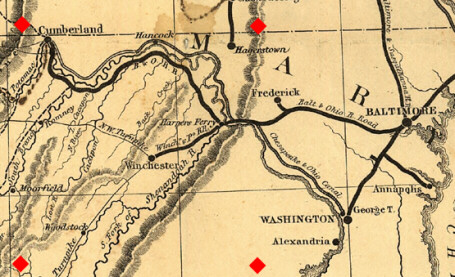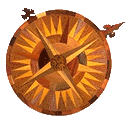 Mass-Produced Goods and Contours of Choice in the Upper Potomac Region Mass-Produced Goods and Contours of Choice in the Upper Potomac Region 
This study addresses the unfolding and interaction of three cultural processes in the ethnically diverse upper Potomac and northern Shenandoah region surrounding Harpers Ferry, West Virginia, during the period of 1750 to 1865. One process involved the dynamics with which distinct social groups and networks formed, solidified and dissipated over time. Such social group dynamics included a second process of communication through the stylistic shaping and display of material culture. These two in turn impacted a third set of dynamics that involved regional exchange systems and competing socio-economic interests deployed across the North Atlantic and within the mid-Atlantic region of America.
I explore the ways in which these three processes intersected one another as members of varying social groups created, obtained, used, and displayed objects that exhibited stylistic patterns that could be employed to communicate a person's affiliations with those groups or to express more individual interests. In the course of this study, I examine the influence of elements of German-American, African-American, and Anglo-American cultural traditions in this region and time period. Particular forms of material culture of religious beliefs, architecture and housewares are analyzed within this theoretical framework.
Throughout the time period of this study, competing factions of British and American manufacturers, and merchant groups in market centers from Philadelphia to Richmond, endeavored to expand the distribution of mass-produced goods in the upper Potomac and northern Shenandoah region. To evaluate the impact of these developments, this study examines evidence for variation in the spread and intensity of such global and regional exchange systems. Archaeological and documentary evidence of differential consumption patterns over time and space shows not just the impact of distribution systems, but also instances of meaningful choices made by consumers who were members of local social groups.

Study region includes area within diamonds above. Follow the "Loudoun Valley Excavations" link below to learn more about some of the facets of material culture and architectural traditions addressed in this study. Use the links below to view data sets of transcriptions of records from 20 stores that operated in this region in the period of 1750-1865, and inventories from excavations of an upland farmstead site included in this study (these are large files, in searchable Adobe .pdf format). A tailored search engine form is also available below. Analyses and interpretations of these data sets, and of data from other archaeological sites in the region, are available in my book Broken Chains and Subverted Plans: Ethnicity, Race, and Commodities (Univ. Press of Florida, 2017) (link).
|





